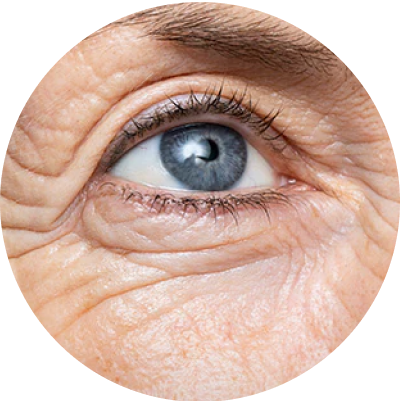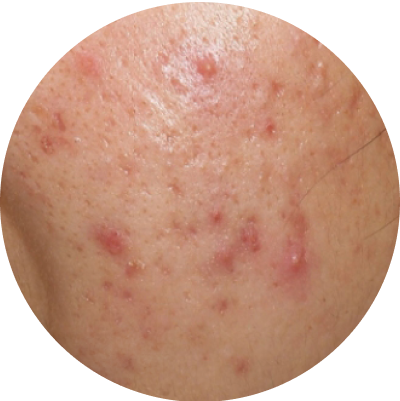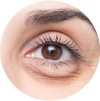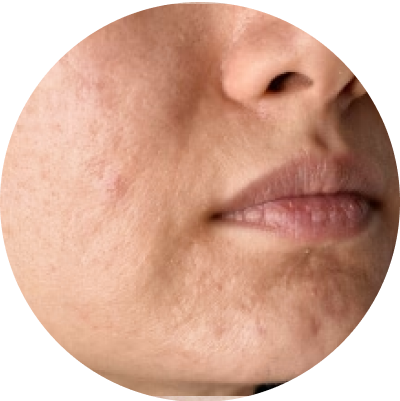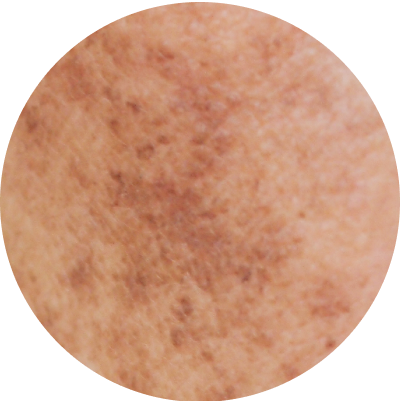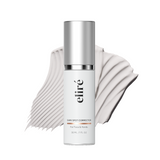Let’s be upfront: pimple patches aren’t great for blackheads.
That might not be the answer you were hoping for, but it’s the truth. Blackheads aren’t filled with fluid the way whiteheads are. They’re made up of stuck oil and dead skin that’s hardened inside your pores. And since most pimple patches (especially hydrocolloid ones) are designed to draw out liquid, they don’t have much to work with when it comes to blackheads.
Still, you’re not alone in asking this. With pimple patches popping up in every drugstore aisle, on TikTok tutorials, and even on celebrities’ “what’s in my bag” videos, it’s natural to wonder if they’re the fix for all skin bumps – including blackheads.
Well, not really. But don’t stop reading yet, because blackheads aren’t hopeless. They just need a different strategy. In this guide, you’ll learn:
-
The difference between blackheads and whiteheads (and why this matters so much).
-
How hydrocolloid pimple patches actually work.
-
When patches might help with blackheads (and when they won’t).
-
How to safely use nose patches for short-term results.
-
What treatments actually keep blackheads away?
Understanding Blackheads vs. Whiteheads
Ever looked in the mirror and thought, “Is this a blackhead or a whitehead?” If so, you’re not alone. The two are often confused, but understanding the difference is key – especially when you’re deciding how to treat them.
You can think of your pores as tiny funnels or little doorways in your skin. Their job is to let oil (sebum) and sweat out, and keep your skin balanced. But sometimes those pores get clogged with a mix of dead skin cells, excess oil, and even leftover makeup or sunscreen.
What happens next depends on whether the pore stays open or closed.
-
Blackheads (open comedones): In this case, the pore stays open. The trapped mixture inside gets exposed to air, and just like a sliced apple that turns brown when you leave it out, the clog oxidizes and darkens. That’s why blackheads look like tiny dark dots. They’re not dirt, as many people assume – it’s just the natural process of oxidation.
-
Whiteheads (closed comedones): Here, the pore seals shut. Because the gunk inside isn’t exposed to oxygen, it stays pale or yellowish. What you see is a small bump under the skin with a white or cream colored tip. Whiteheads are more “squishy” because they’re filled with fluid, unlike the firmer texture of blackheads.
This small detail – the pore staying open versus closed – changes everything. Whiteheads are easier to treat with things like hydrocolloid patches because there’s fluid to absorb. On the other hand, blackheads are tougher because they’re compact and solid.
Here’s a quick way to tell them apart:
-
A flat, dark dot that doesn’t squeeze out? That’s a blackhead.
-
A raised bump with a white cap? That’s a whitehead.
-
Something that’s red, swollen, and painful? That’s not either – it’s an inflamed pimple.
According to one report, blackheads are often the very first stage of acne. They form when sticky skin cells and excess oil block pores, which can later turn into inflamed pimples if bacteria get involved.
So next time you examine your skin in the mirror, remember: both blackheads and whiteheads come from the same problem – clogged pores. The only difference is whether the pore is open or closed.
And that’s why pimple patches are magic for whiteheads but mostly useless for blackheads.
How Do Pimple Patches Work?
Let’s break down the mystery of hydrocolloid pimple patches or other little stickers you see all over TikTok and skincare shelves.
First things first: What is a pimple patch?
To put it simply, a pimple patch is a small, usually clear sticker made from a special material called hydrocolloid.
Hydrocolloid isn’t some trendy invention – it’s actually been used in hospitals for decades to help wounds heal. Doctors and other medical professionals use it on burns, surgical cuts, and scrapes because it’s fantastic at one main job: drawing out fluid while keeping the skin protected.
When beauty brands realized the same principle could help acne, pimple patches were born.
But how does it work?
Here’s what happens when you stick one on a blemish:
-
Absorption: The hydrocolloid acts like a sponge. If your pimple is filled with pus, oil, or fluid, the patch pulls it out and traps it inside. That’s why when you peel the patch off after a few hours, you often see that satisfying little white blob stuck to it.
-
Protection: A patch creates a barrier between your pimple and the outside world. No bacteria from dirty pillowcases, no pollution, and – let’s be honest – no picking fingers. This not only reduces the chance of infection but also keeps you from accidentally making the breakout worse.
-
Healing boost: Hydrocolloid patches maintain a slightly moist environment on the skin, which sounds strange but is actually the ideal condition for healing. Moist wound care has been shown to speed up recovery and reduce the risk of scarring compared to leaving skin dry and exposed.
Why do they work best on whiteheads?
This is where the magic really happens. Whiteheads are soft and filled with fluid, so patches can easily absorb the pus and flatten the spot overnight. That’s why they’re so popular – you literally get visible results within hours.
But the real challenge is: blackheads don’t play by the same rules. Blackheads are solid plugs of oil and dead skin that have hardened inside the pore. There’s no liquid for the patch to absorb.
So while you can still wear a patch on top of a blackhead, don’t expect it to magically pull the plug out. At best, it may help keep the area clean and prevent irritation, but it won’t “vacuum” the blackhead away.
Can Pimple Patches Help with Blackheads?
So, do pimple patches work on blackheads? The short answer is: not really.
If you’re hoping a patch will clear the black dots on your nose overnight, you’ll be disappointed. Hydrocolloid patches just aren’t built for that.
That said, there are a few situations where they might have some use:
-
Reducing irritation: If a blackhead is looking red or feels irritated, placing a patch over it can help calm the skin. It also prevents you from picking or squeezing, which is often the reason blackheads turn into inflamed pimples in the first place.
-
Surface cleanup with specialty strips: Regular hydrocolloid patches won’t pull out blackheads, but special nose strips or blackhead-removing patches – those adhesive ones you peel off – can sometimes lift away surface debris.
However, it’s important to set expectations. Nose strips may give you that “wow” moment when you peel them off and see gunk on the strip. But the effect is temporary. The deeper part of the blackhead usually remains, and within a few days, the pore can clog again.
According to Healthline, adhesive pore strips only remove superficial debris. They don’t treat the root problem inside the pore, and they don’t stop blackheads from returning.
So yes, patches can give you a quick improvement. But for long-term results? You’ll need a different approach.
How to Best Use the Our Nose Pimple Patch
Many people give nose patches a try – they’re one of the most popular quick fixes for blackheads. Why?
Because they’re shaped to fit the curves of your nose, which is where blackheads love to gather. Your T-zone (forehead, nose, and chin) has more oil glands than the rest of your face, so it’s prime real estate for clogged pores.
A well-applied nose patch will give you that instant gratification moment of seeing debris stuck to the strip when you peel it off.
However, here’s the catch: technique matters. If you slap one on without preparing your skin first, you'll likely be disappointed. But if you take the time and do it right, you'll be getting the best possible results, with minimal irritation.
Without further ado, let's walk you through the proper use of a nose patch. Here's your guide:
-
Wash your face: Start using a mild cleanser to clear off the oil, dirt, and any product on your face. Your clean skin will stick better to the patch, and you won't be clogging more bacteria under the strip.
-
Warm it up: Blackheads are stubborn blocks of dead skin and oil, so warming them up beforehand can be a huge advantage. Take a hot shower before applying the strip or run a warm towel over your nose for a few minutes. This opens up the pores a tiny bit and loosens the substance within.
-
Wet your nose: This is the most important step: most adhesive nose strips will not adhere to dry skin. Make sure your nose is damp – not dripping wet but moist enough for the strip to activate.
-
Put on the strip: Position the patch over your nose and press firmly. Flatten bubbles or edges that are lifted so the patch will conform to your skin. The more it is in contact with your skin, the better it will adhere.
-
Let it dry: Allow the strip to remain for 10-15 minutes (or as directed) before it dries and becomes hard. If you take it off too quickly, it will not peel off much.
-
Peel slowly and carefully: Begin peeling at the sides and gradually work your way toward the middle. Don't pull it off in one swift movement – it may be so trendy in commercials, but in real life, it can be irritating or have tiny broken blood vessels. In case peeling is too harsh, damp the strip with a little bit of warm water to make it come off.
-
Moisturize afterwards: Adhesive patches might dry out or tighten your skin. Treat the area with a gentle, non-comedogenic moisturizer to calm it and restore your skin barrier later.
Extra Tips for Best Results
Take proper care of your skin and use these handy tips for the best results.
-
Don’t overdo it: Applying nose patches daily won't do you any additional good. It dries out your skin and gets your pores to release more sebum to replace the lost moisture. Twice a day is more than sufficient.
-
Don't rip harshly: Your skin is like silk fabric. If you remove it too forcefully, you're likely to end up damaging it. Delicate and frequent peeling is the best method.
-
Always moisturize afterwards: Your skin barrier is what keeps you safe from irritation and infection. By moisturizing after you've applied a strip, you're balancing your skin and cutting dryness.
-
Be realistic: Nose patches are perfect for surface cleaning, but they don't magically vanish blackheads. Use them as an instant cosmetic tool, but not a solution.
When to Use Pimple Patches on Blackheads
So, are there any scenarios when you'd apply patches over blackheads? Yes – but only in extremely rare situations.
If you're thinking that you can use them to clean out your pores or have long-term effects, you'll be disappointed. But if you apply them as a little helper, rather than your only solution, patches can be added to your skin care arsenal.
Let's dissect when they are useful and how to pair them with other treatments.
Quick Fix Before an Event
Got an event scheduled – a date night, a photoshoot, or just a night out where you want your skin to feel unusually silky?
Nose patches can temporarily remove surface impurities and leave your pores looking cleaner, your skin smoother, and your makeup applied more evenly after.
Remember, the effect won’t last forever. Within a few days, oil and dead skin will clog the pores again. But for a short-term glow-up, patches can be a handy trick.
If You’re a Skin Picker
We all tend to poke, squeeze, and prod our pores. Sadly, this thing only causes more harm than benefit and can turn your skin red, scarred, or infected. If you just can't resist and have a compulsion to pick blackheads, applying a patch as a protective barrier is a good suggestion.
By covering your skin with a patch, you're putting a barrier between your hands and your pores. Even if the patch does not eliminate the blackhead, it spares your skin from repeated squeezing damage. It's like a little reminder to leave your pores be.
As a “Bonus” Tool in a Bigger Routine
Patches work best when they're not the center of attention but part of the supporting cast.
Blackheads require products that penetrate deeper into pores – such as salicylic acid, glycolic acid, or retinoids. These products exfoliate within the pore, prevent clogging, and eventually restrict new blackhead formation.
Experts usually suggest trying patches as a cosmetic or behavioral addition, not a fix. A report added that though patches offer temporary gratification, items such as retinoids and salicylic acid perform much better for extended blackhead control.
However, patches can be a "bonus”:
-
Use a nose patch from time to time for an instant cleaner appearance.
-
Then follow up with ongoing use of blackhead-busting skincare to address the underlying issue.
This way, you value both the temporary satisfaction of a less blocked nose and the longer-term benefit that only active ingredients can provide.
Aftercare
You may also use patches as aftercare. For instance, following exfoliation or a clay mask, place a hydrocolloid patch on an irritated pore to soothe the skin, de-swollen redness, and keep bacteria out.
In this case, the patch is not about extracting blackheads but allowing your skin time to heal gradually.
Common Mistakes to Avoid When Treating Blackheads
If you’ve ever felt frustrated with blackheads, know that many others experience the same thing.
Almost every person deals with them at some point, and it’s easy to fall into habits that make them worse instead of better. Blackheads can be stubborn, and in the rush to “fix” them, many end up damaging the skin without realizing it.
The fact is, blackheads are less about squeezing and scrubbing, and more about knowing how and why they happen, and what actually works to get rid of them.
Let's dispel the most popular myths – and what to do instead.
Scrubbing Too Hard
If you notice black spots on your nose, you may be tempted to grab a gritty cleanser and scrub until squeaky clean. It might make you feel good temporarily, but it's not the answer.
Blackheads occur in the pore, and physical cleansers are simply not deep enough to excavate the plug. What they will instead do is irritate your skin, cause inflammation, and in a few instances, push your oil glands to work harder in creating more sebum as an overreaction to the irritation.
The outcome? Oily skin and maybe more blackheads down the line.
You can use chemical exfoliants such as salicylic acid, which sweeps into pores to break down excess oil and dead skin cells. It acts where the clog starts rather than scrubbing the surface.
Trying Risky DIY Hacks
If you’ve ever typed “blackhead removal home remedies” into a search engine, you’ve probably seen suggestions like toothpaste, lemon juice, or baking soda. While these sound clever, they can actually do more harm than good.
-
Toothpaste contains ingredients meant for teeth, not skin – it can cause irritation, dryness, and even chemical burns in sensitive areas.
-
Lemon juice is extremely acidic. While it may feel refreshing, it can jeopardize your skin barrier, increase sun sensitivity, and trigger post-inflammatory hyperpigmentation.
-
Baking soda is too alkaline for the skin. Over time, it ruins your natural pH balance and weakens your skin's protective barrier, making your skin prone to irritation and breakouts.
The better option is to adhere to treatments recommended by dermatology science, such as salicylic acid cleansers, retinoids, and gentle exfoliating face masks. They won't deliver an immediate "DIY hack" thrill, but they work and do no harm in the long run.
Squeezing Everything
There's something incredibly tempting about squeezing a blackhead – instant gratification. But forceful squeezing will have unpleasant consequences in various ways:
-
It can force the clog further into the pore, which is more difficult to treat.
-
It can hurt the surrounding tissue with inflammation and swelling.
-
In some cases, it forms scars or large pores that are very difficult to remove.
Extractions are done by dermatologists with sterile equipment and controlled pressure. It is almost impossible to be as safe at home.
If you can't resist squeezing, do it in moderation. Use a warm compress first to relax the clog, and never forget to wash your hands. Better yet, let a licensed esthetician or dermatologist do the safe extractions.
Overusing Pore Strips
Pore strips can be satisfying – you peel them off and see all the gunk they pulled out. But there is the catch: you overdo it and your skin barrier compromises and can become irritated, dry, or break into teeny tiny broken capillaries on the sides of your nose.
They also don’t eliminate the base of the blackhead. What you see on the strip is often nothing more than surface junk. The bottom portion of the clog is still in the pore and could return quickly.
Use pore strips no more than once a week or two at best as a cosmetic boost, never a treatment. For continuous blackhead control, use proven active ingredients instead.
Skipping Moisturizer
Most people with oily or acne skin think skipping moisturizer will cut back on oily skin. But the irony is: when your skin is dry, it makes up for it by releasing more oil, which actually worsens the blackheads.
So, moisturize your face with an oil-free, non-comedogenic moisturizer. These creams provide your skin with the moisture it desires without clogging pores.
A balanced moisture barrier helps your other treatments – including acids and retinoids – work more effectively with less irritation.
What to Do Instead: Smarter Blackhead Care
Unless you want to fall into these traps and get blackheads, try these dermatologist-recommended suggestions:
-
Salicylic acid: This beta hydroxy acid (BHA) breaks down oil and exfoliates within pores, so it's among the finest products for blackheads.
-
Retinoid boost: Retinoids control cell turnover, keeping dead skin from blocking pores in the first place. Prescription retinoids are particularly potent.
-
Gentle exfoliation: Replace rough scrubs with chemical exfoliants such as glycolic or lactic acid. They smooth the surface without microtears.
-
Daily moisturizing: Light oil-free moisturizer keeps the skin adequately hydrated and avoids the risk of rebound oil production.
The American Academy of Dermatology (AAD) proposes salicylic acid and retinoids as first-line treatment for blackheads because they work best in preventing and curing clogged pores without the dangers of scrubbing or home tricks.
Final Thoughts
So, do pimple patches for blackheads work? No, not exactly.
Pimple stickers are a great tool for what they're made to do: soaking up liquid from easily-draining lesions, covering up healing skin, and deterring you from picking. Blackheads, though, are a different kind of biological issue — they are tight plugs in open follicles and aren't emptied by hydrocolloid suction.
If your concern is brief, temporary cosmetic camouflage of small blackheads, adhesive nose strips and a few prescription patches can help — but don't expect it to last unless you also use maintenance techniques.
For actual, long-term reduction, depend upon evidence-based pore-clearing actives (salicylic acid) and retinoids (adapalene), professional extractions or peels every now and then, and diligent, routine upkeep. The data and clinical experience support gradual, sustained improvement rather than quick fixes as a cure.
Most importantly, patience and consistency trump endless, abrasive fast solutions. Protect your skin barrier, apply tried-and-true chemistries frequently, and get professional help for stubborn cases.
FAQ
What will draw out a deep blackhead?
A combination of a BHA, such as salicylic acid, to dissolve sebum plus topical retinoids to normalize follicular cell turnover, is most effective. For very deep, stubborn blackheads, a dermatologist’s extraction under sterile technique is often necessary. Clinical trials and product studies show measurable reductions in comedones with these actives over weeks to months.
What happens to blackheads if not removed?
Many blackheads remain stable or fluctuate over time, but they can also become inflamed if bacteria colonize the plug, turning into papules or pustules. They seldom “rotate out” overnight; in many people, they persist until addressed by chemical exfoliation, retinoids, or extraction. Left alone, they may also enlarge or darken further due to oxidation.
What is the white stuff in blackheads?
When you squeeze out a blackhead and notice white stuff, that is usually dead skin cells (keratin) and sebum (oil). In a blackhead, that material has oxidized on the surface, i.e., the inside is dark.
How to remove blackheads without opening pores?
Pores are not doors that you "open" and "close" like most people envision. Chemical treatments (salicylic acid) and topical retinoids clear and prevent comedones without the traumatic squeezing that “opens” pores. Clinician extraction of comedones is the least damaging means of removing plugs when performed properly.
Does toothpaste really remove blackheads?
No. Toothpaste is designed for teeth — it has irritants such as baking soda, hydrogen peroxide, and rough abrasives that will destroy facial skin. It can produce redness, chemical burn, or hyperpigmentation rather than effectively removing comedones. Dermatologists do not prescribe toothpaste for the treatment of acne.
Can baking soda remove blackheads?
No. Alkaline baking soda overbalances the skin's pH, acidifying and destroying the acid mantle and barrier. This raises irritation and can exacerbate acne in the long term. Try pH-suitable exfoliants such as salicylic acid.
Do pore strips work on deep blackheads?
Pore strips work well to remove surface elements of comedones and can be employed for a short-term improvement. However, they do not reliably remove deep comedones and are not a long-term prevention strategy. Too much use may cause irritated skin and widened pores. Chemical exfoliants or professional extraction are a more suitable option for blackheads that are deeper.









